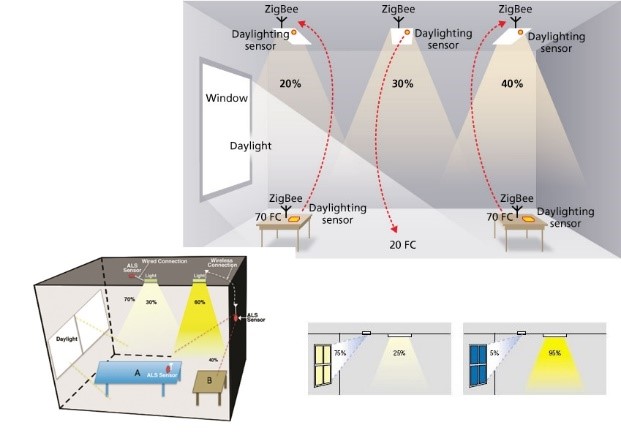Daylight control in a room by using movable shaders
Project abstract
In addition to temperature and humidity, lighting is also very important for the comfort of a room user. There are defined standards, eg prescribed by OSHA, for recommended desktop lighting levels in different industries. Controlling the lighting of office spaces, especially those that are fully glazed, is very challenging because it is necessary to prevent the glare of light in the direction of computer monitors, or dazzle users. The aim of this work is to develop a system of automatic control of already installed roller blinds in the premises of LARES on the 13th floor of the C building.
|
|
Mini projects
- It is necessary to develop a data logger that uses a ready-made light sensor and which can collect data on the lighting of an individual area for a longer period of time. The functionality of the data logger should then be extended to allow communication with the already installed blind system via WiFi network, for the purpose of blinds management.
- Based on the construction plan and collected measurements, it is necessary to make a computer model of the room whose lighting is controlled. This model will later be used to create an algorithm to control the blinds.
- It is necessary to develop an algorithm that calculates the optimal position of the shade with regard to the given lighting requirements, the given model of the room and the current meteorological conditions (cloudiness, position of the Sun). The operation of the algorithm needs to be checked first by simulation and then experimentally.
Additional information
Number of students
1
Keywords
smart building, model predictive control, energy effiecinecy, room lighting



 Pristupačnost
Pristupačnost
